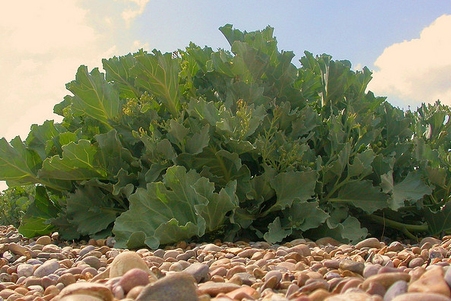Our online store is now live!
Seasonal Produce
Whether you're a chef, wholesaler or a retailer, we know quality is important to you.

Availablity Period
March
We're currently growing
Sea kale
Together with watercress, samphire, and possibly parsnip, sea kale is one of a few vegetables that are truly native to Britain. Sea Kale appears in late winter - when few other fresh, new-season vegetables are ready. And this is because it is traditionally "forced" like its seasonal partner, rhubarb. The forcing process creates a better delicacy: the result is tender, white blanched stems with a delicate and nutty flavour.
Make an EnquiryBrowse by letter Browse by Month
March

Curly Parsley
This slightly peppery herb is commonly used as a flavouring and garnish. Curly parsley is very coarse relative to flat leaf parsley and may be describ... more
This slightly peppery herb is commonly used as a flavouring and garnish. Curly parsley is very coarse relative to flat leaf parsley and may be described as having a younger, sharper flavour than flat leafed parsley. Where it grows as a biennial, in the first year, it forms a rosette of tripinnate leaves 10–25 cm long with numerous 1–3 cm leaflets, and a taproot used as a food store over the winter. In the second year, it grows a flowering stem to 75 cm tall with sparser leaves and flat-topped 3–10 cm diameter umbels with numerous 2 mm diameter yellow to yellowish-green flowers. The seeds are ovoid, 2–3mm long, with prominent style remnants at the apex. One of the compounds of the essential oil is apiol. The plant normally dies after seed maturation.
Less
Dwarf bok choy
A versatile green that's great for stir-fries. It has a generally sweet flavour with a hint of mustard. Dwarf bok choy are more leafy than the regular... more
A versatile green that's great for stir-fries. It has a generally sweet flavour with a hint of mustard. Dwarf bok choy are more leafy than the regular bok choy and it goes without saying that they are also a lot smaller. This crop is actually grown all year round in our Essex glasshouse.
Less
Jersey Royal potatoes
Jersey Royal potatoes, famous for being one of the UK's favourite new potatoes, are renowned for their unique taste, flavour and delicate skins.The fl... more
Jersey Royal potatoes, famous for being one of the UK's favourite new potatoes, are renowned for their unique taste, flavour and delicate skins.
The flavour of Jersey Royal new potatoes arises from the unique growing conditions on the island. The island slopes from north to south and so benefits from a large level of sunlight during the growing season. The soil is well-drained and nutrient-rich thanks to the vraic (locally collected seaweed) that is used as a fertiliser. A true seasonal gem, around 99% of the crop is exported to the UK and the rest are enjoyed by the Jersey inhabitants.

Red meat radishes
Juicy, crunchy and crisp, UK-grown red radishes add a delightful punchy colour and flavour to dishes. Red meat radishes have a striking tie die centre... more
Juicy, crunchy and crisp, UK-grown red radishes add a delightful punchy colour and flavour to dishes. Red meat radishes have a striking tie die centre. Their peppery taste stimulates the production of saliva and rouses the appetite.
Less
Sea kale
Together with watercress, samphire, and possibly parsnip, sea kale is one of a few vegetables that are truly native to Britain. Sea Kale appears in la... more
Together with watercress, samphire, and possibly parsnip, sea kale is one of a few vegetables that are truly native to Britain. Sea Kale appears in late winter - when few other fresh, new-season vegetables are ready. And this is because it is traditionally "forced" like its seasonal partner, rhubarb. The forcing process creates a better delicacy: the result is tender, white blanched stems with a delicate and nutty flavour.
Less